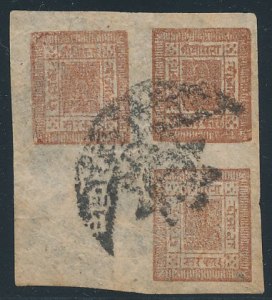Nepal is bound in the north by the Himalayan mountains and in the south there is a fertile plain that eases into the Indian heartland. The neighbor to the north, Tibet, is inaccessible because of the more than four mile high mountains so the land to the south, India, has always had great influence on Nepal, supplying immigrants and religious and cultural ideas. It is not surprising, then, that the classic philatelic issues of Nepal have a strong feel of the more primitive Indian Native States' issues. The first stamps of Nepal were issued in 1881 and were really postal issues of the same class as that of the Indian States. Nepal's relations with the outside world were handled by India and the stamps of Nepal were only valid within Nepal and India. Letters from Nepal that went to foreign countries needed Indian postage stamps on them. The printing on these early Nepal issues is very primitive and tete beche pairs are so common as to indicate that the printers who set up the plates from the
Blog
- Read more »
- Posted November 30, 2019in NewsRead more »
Most American collectors who wish to venture past the home country predilection for collecting only United States stamps learn about the stamps of the British Commonwealth. Some go to Germany and Area and some few more to France and Colonies. But one of the major collecting areas is the Italian area. Italian philately has it all. Italy confederated in the late Nineteenth Century like Germany and so has numerous State issues such as Tuscany and Roman States that were issued by political entities that were later unified by Garibaldi. Italian philately has the intrinsic interest of Italy proper with thousands of well designed stamps with numerous difficult to find varieties only some of which are listed by the Scott catalog (most of the rest are listed by the specialized Italian catalog-Sassone). The airmails of Italy are very popular as are the postage dues and parcel posts. Italy has WWI and WWII issues including Occupation stamps that are as interesting as Germany's and the Italian Colonies
- Posted May 07, 2019in NewsRead more »
 The hobby of philately just like everything else chages and adapts along with time. Several years ago, I had a real treat. I had a chance to work on a collection in which the last stamp was put in the album in 1921. The Collector died in that year and his great grandchildren decided to sell the stamps some eighty years later. Collecting styles have changed over the years and working on this collection brought back memories of the old times. A collector in 1921 was never content with having one example of a stamp. This collection had no less than 20 5c 1847s were as well as a number of 10c. But the real interest began with the 1861 issue where collectors of that bye gone era collected numerous shades and better cancels. The 1861s contained Civil War Patriotics, the 1869s fancy cancels and used in Japan and the Banknotes had a plethora of interesting and specialized subsections that were a pleasure to behold.
The hobby of philately just like everything else chages and adapts along with time. Several years ago, I had a real treat. I had a chance to work on a collection in which the last stamp was put in the album in 1921. The Collector died in that year and his great grandchildren decided to sell the stamps some eighty years later. Collecting styles have changed over the years and working on this collection brought back memories of the old times. A collector in 1921 was never content with having one example of a stamp. This collection had no less than 20 5c 1847s were as well as a number of 10c. But the real interest began with the 1861 issue where collectors of that bye gone era collected numerous shades and better cancels. The 1861s contained Civil War Patriotics, the 1869s fancy cancels and used in Japan and the Banknotes had a plethora of interesting and specialized subsections that were a pleasure to behold.
This collection was especially interesting - Read more »
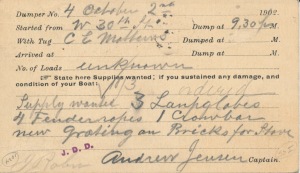 Philatelists have always referred to items they don't want or need, or which are in specialty areas that they don't respect as "garbage". But there is one rare philatelic item that has a trashy past and is called the "Garbage Card" or "full face McKinley". After President McKinley was assassinated in 1901, the Postal Service decided to honor him by issuing a current rate postal card with his portrait on it. Several designs were submitted and the approved design with a portrait of the President's portrait straight on (the so called "full face") was printed. When the President's widow saw the card, she objected to the likeness and the printing. In deference to her, the card was pulled and a 3/4 portrait card was issued. A box of 500 of the original cards was accidentally issued, probably because they had been ordered with preprinted addresses and had been removed from the main group of cards that were scheduled for destruction. These cards were imprinted with the return address of a garbage
Philatelists have always referred to items they don't want or need, or which are in specialty areas that they don't respect as "garbage". But there is one rare philatelic item that has a trashy past and is called the "Garbage Card" or "full face McKinley". After President McKinley was assassinated in 1901, the Postal Service decided to honor him by issuing a current rate postal card with his portrait on it. Several designs were submitted and the approved design with a portrait of the President's portrait straight on (the so called "full face") was printed. When the President's widow saw the card, she objected to the likeness and the printing. In deference to her, the card was pulled and a 3/4 portrait card was issued. A box of 500 of the original cards was accidentally issued, probably because they had been ordered with preprinted addresses and had been removed from the main group of cards that were scheduled for destruction. These cards were imprinted with the return address of a garbage - Posted April 11, 2019in NewsRead more »
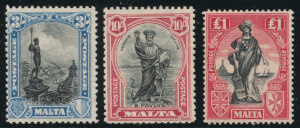 Collectors either esteem or denigrate the earlier stamps of British Commonwealth and they do so for the same reason. From about 1890 to the QE II period (1953), the stamps of nearly all the Commonwealth colonies are the same-small stamps with a portrait of the reigning monarch (either Victoria, Edward, George V or George VI)-distinguished by stamp collectors by scores of varieties by monarch, denomination and watermark. Many find it very redundant. Others exhilarate in the variety on a simple theme. Some like Mahler. Some like Bach. But several of the British Commonwealth colonies in the 1920s and 1930s experimented with change and collectors have rewarded these experiments with great collecting popularity. These countries (and Malta and Jamaica come to mind immediately) withdrew from the Crown Agents printing and design group and began to plan their own stamps with themes that were germane to the politics and history of the particular Colony. These stamps and countries are even more
Collectors either esteem or denigrate the earlier stamps of British Commonwealth and they do so for the same reason. From about 1890 to the QE II period (1953), the stamps of nearly all the Commonwealth colonies are the same-small stamps with a portrait of the reigning monarch (either Victoria, Edward, George V or George VI)-distinguished by stamp collectors by scores of varieties by monarch, denomination and watermark. Many find it very redundant. Others exhilarate in the variety on a simple theme. Some like Mahler. Some like Bach. But several of the British Commonwealth colonies in the 1920s and 1930s experimented with change and collectors have rewarded these experiments with great collecting popularity. These countries (and Malta and Jamaica come to mind immediately) withdrew from the Crown Agents printing and design group and began to plan their own stamps with themes that were germane to the politics and history of the particular Colony. These stamps and countries are even more - Read more »
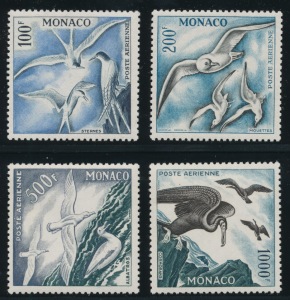 There are two main types of thematic collecting. The first involves using philatelic items to annotate a historical or cultural point. A collection entitled "The Slave Trade" or "Style and Syntax in Music" would be examples of this type. The second type is more prosaic-using stamps as pictures to illustrate a theme. The above set is the most expensive and popular of the Bird thematics and it is one of those sets that can easily be incorporated into either type of thematic collection. Its use as an example of the species of gull is its obvious use in a "Birds on Stamps" collection. But I have seen the set used in a Hitchcock thematic collection, and a Aviation collection as well. Thematic collecting is far more about imagination and far less about completion than traditional philately and this Monaco set is a good example of why.
There are two main types of thematic collecting. The first involves using philatelic items to annotate a historical or cultural point. A collection entitled "The Slave Trade" or "Style and Syntax in Music" would be examples of this type. The second type is more prosaic-using stamps as pictures to illustrate a theme. The above set is the most expensive and popular of the Bird thematics and it is one of those sets that can easily be incorporated into either type of thematic collection. Its use as an example of the species of gull is its obvious use in a "Birds on Stamps" collection. But I have seen the set used in a Hitchcock thematic collection, and a Aviation collection as well. Thematic collecting is far more about imagination and far less about completion than traditional philately and this Monaco set is a good example of why. - Posted April 08, 2019in NewsRead more »
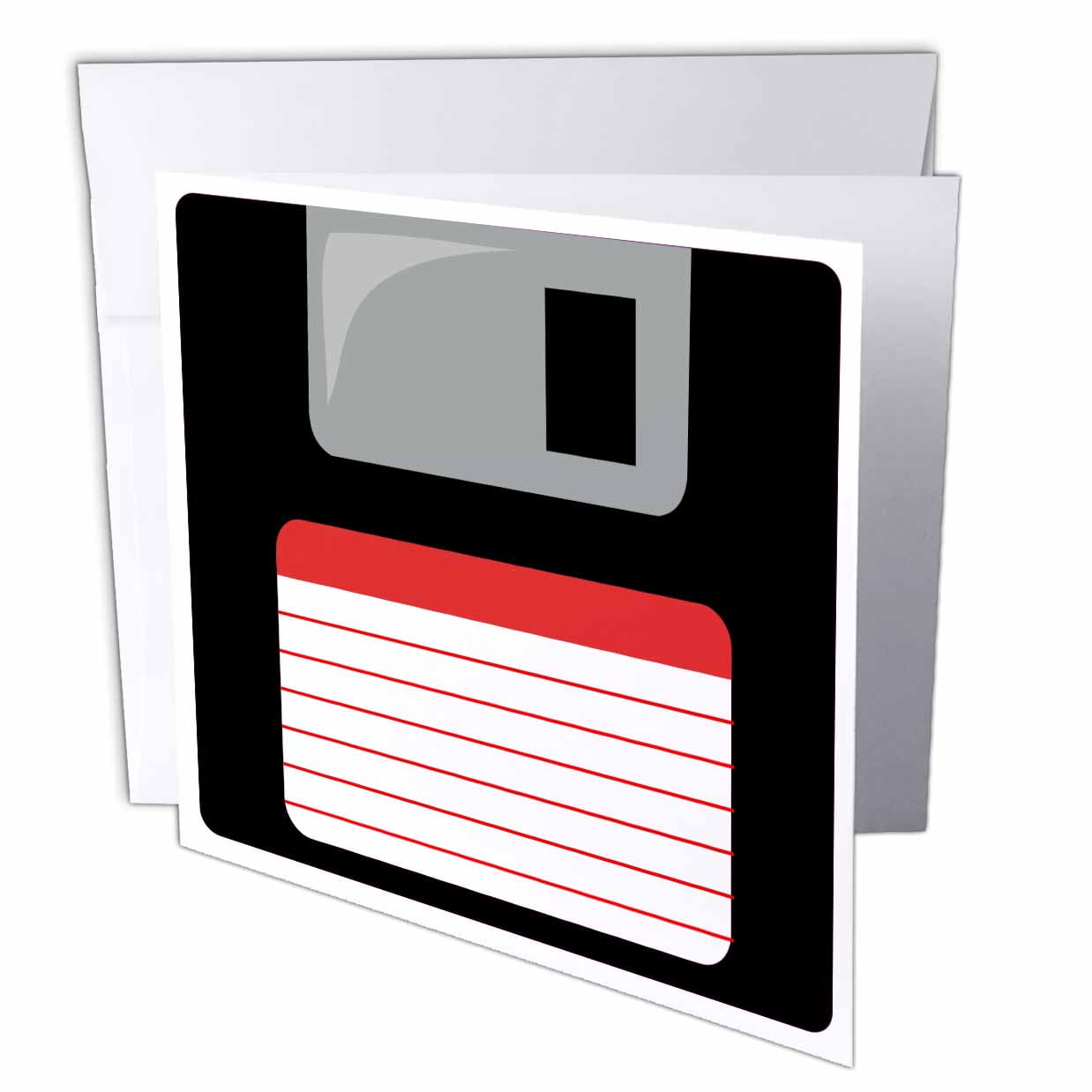 I am one of the least techno people around. I never learned how to use our VCR at home and when that technology was replaced I figured that I could wait out most innovations and never have to figure out how to use anything new. But several years ago I got an iPad and it was revelatory, so intuitive and easy and fast that I now carry mine around the house reading books, going online and responding to emails. All this is to say that if I can use the Scott catalog iPad app, which is really just the Scott catalog downloaded on your iPad, anyone can. This app is wonderful. The illustrations are great and movement between pages is fast. Imagine having the entire forty pound Scott catalog on your tiny Ipad to take to stamp shows or your friend's house or just to have with you with all of your books and Internet connections that your iPad gives you. It is just a matter of a few years before iPad type apps for the Scott catalog are the only way that the catalog is available. Many people criticiz
I am one of the least techno people around. I never learned how to use our VCR at home and when that technology was replaced I figured that I could wait out most innovations and never have to figure out how to use anything new. But several years ago I got an iPad and it was revelatory, so intuitive and easy and fast that I now carry mine around the house reading books, going online and responding to emails. All this is to say that if I can use the Scott catalog iPad app, which is really just the Scott catalog downloaded on your iPad, anyone can. This app is wonderful. The illustrations are great and movement between pages is fast. Imagine having the entire forty pound Scott catalog on your tiny Ipad to take to stamp shows or your friend's house or just to have with you with all of your books and Internet connections that your iPad gives you. It is just a matter of a few years before iPad type apps for the Scott catalog are the only way that the catalog is available. Many people criticiz - Posted April 05, 2019in NewsRead more »
 One of the most interesting aspects of US philately over the last twenty years has been the number of unusual collecting varieties that are issued as part of the ordinary postal issues of the Bureau of Engraving and Printing. Modern technology seems to produce more printing varieties rather than fewer and in the future many of these varieties could turn out to be very rare. Compare two regular issue first class postage rate stamps- the 37c regular issue stamp of 2002 to the 6c regular issue stamp of 1970. There are over 100 listed varieties of the 2002 issue in the Scott specialized compared to only about 20 of the 6c stamp. And specialists identify many more varieties than these. What traditionally happens in philately is that at the onset only a few collectors search out newer varieties. Look at early plate blocks. Plate Block collectors in the 1920's were looked at as kind of nutty but over the years their prescience paid off. It is impossible to predict that the thousands of varieties
One of the most interesting aspects of US philately over the last twenty years has been the number of unusual collecting varieties that are issued as part of the ordinary postal issues of the Bureau of Engraving and Printing. Modern technology seems to produce more printing varieties rather than fewer and in the future many of these varieties could turn out to be very rare. Compare two regular issue first class postage rate stamps- the 37c regular issue stamp of 2002 to the 6c regular issue stamp of 1970. There are over 100 listed varieties of the 2002 issue in the Scott specialized compared to only about 20 of the 6c stamp. And specialists identify many more varieties than these. What traditionally happens in philately is that at the onset only a few collectors search out newer varieties. Look at early plate blocks. Plate Block collectors in the 1920's were looked at as kind of nutty but over the years their prescience paid off. It is impossible to predict that the thousands of varieties - Posted April 04, 2019in NewsRead more »
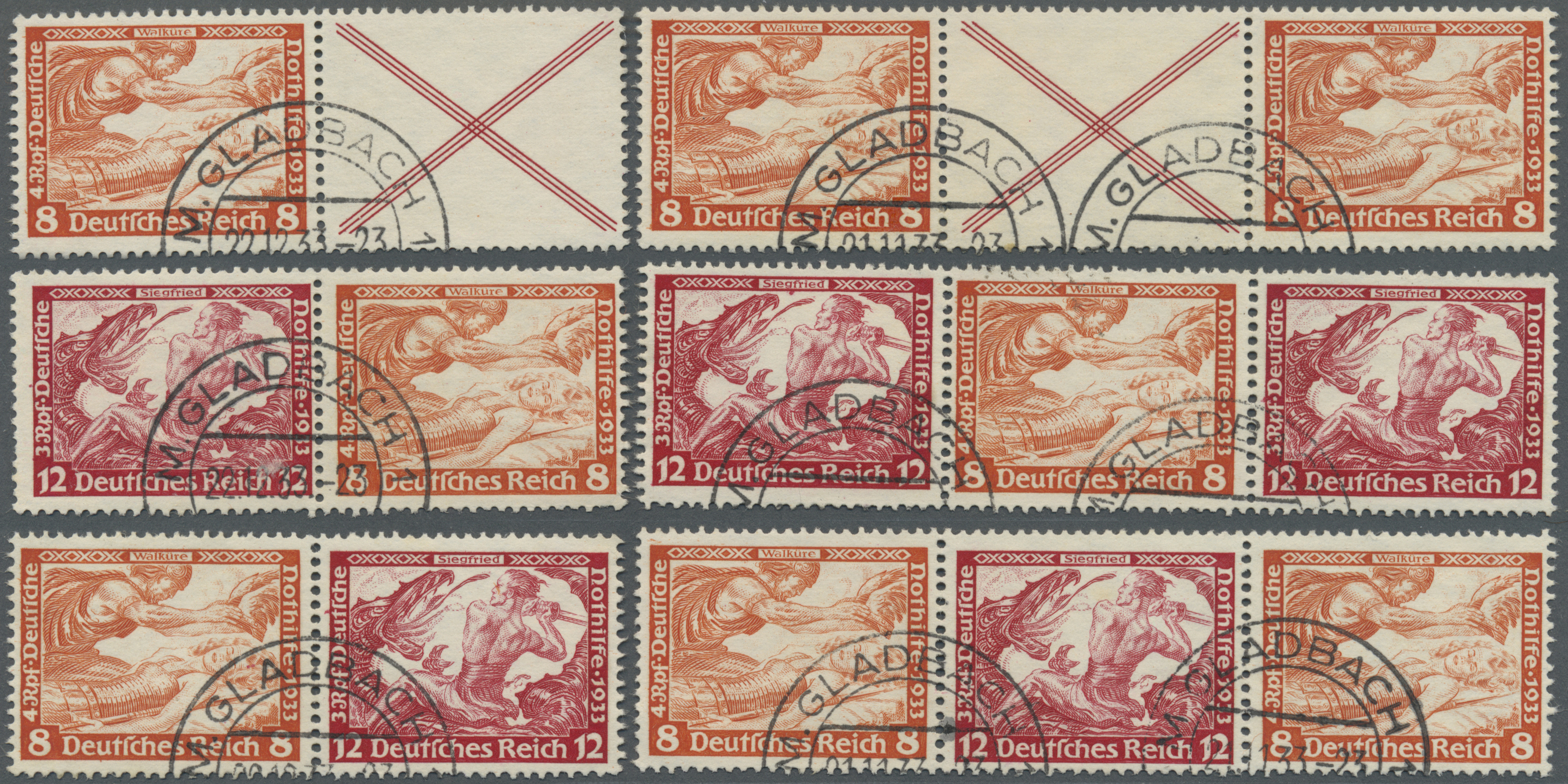 There are areas of specialization that are unique to each country or areas of philately. United States collectors are avid about plate blocks and stamp collectors in the rest of the world think we are crazy. Israel collectors esteem tabs. British Commonwealth collectors collect gutter pairs and marginal markings. German area collectors collect Zusammendrucke. Stamps that go into stamp booklets are printed in panes (usually of six) and those panes are printed in sheets of various sizes. The United States post office does not issue these large uncut sheets to collectors so that all US philatelists can collect is booklet panes and booklets. German philatelists have additional options as the German post office sells full booklet sheets to philatelists. These are uncut sheets, often with 100-220 subjects on the sheet. German collectors collect them in full sheets, as panes and in combinations that never would be issued to the public but which are possible from breaking up the sheets. Zusammendrucke
There are areas of specialization that are unique to each country or areas of philately. United States collectors are avid about plate blocks and stamp collectors in the rest of the world think we are crazy. Israel collectors esteem tabs. British Commonwealth collectors collect gutter pairs and marginal markings. German area collectors collect Zusammendrucke. Stamps that go into stamp booklets are printed in panes (usually of six) and those panes are printed in sheets of various sizes. The United States post office does not issue these large uncut sheets to collectors so that all US philatelists can collect is booklet panes and booklets. German philatelists have additional options as the German post office sells full booklet sheets to philatelists. These are uncut sheets, often with 100-220 subjects on the sheet. German collectors collect them in full sheets, as panes and in combinations that never would be issued to the public but which are possible from breaking up the sheets. Zusammendrucke - Posted March 01, 2019in NewsRead more »
Watermarks are a design that are put in paper by the manufacturer to identify the paper as their product. They are an outgrowth of the earliest paper which is called laid paper. Laid paper is produced by allowing the paper pulp particles to coagulate on a bed that is a screen made up of closely knit small parallel rods of metal. The pulp coalesces in a pattern of thickness and thinness that mimics the bed that it was made on. When paper technology advanced and paper was produced on a cloth bed (where the fibers had been woven-thus "wove" paper) paper had no thick-thin variance within the sheet. Paper makers found that they could put a pattern in the cloth bed that the paper was formed on and, when the fibers settled, the pattern would show up in reverse as an area where the paper was thinner. These were the first watermarks.
When stamps were first proposed the major objection to their being issued was fear - Read more »
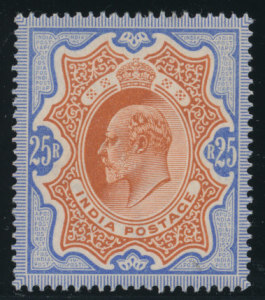 Despite a substantial increase in the last several years, the stamps of India and States are still undervalued and under appreciated. As the economy of India has grown and as the Indian diaspora has become more financially successful in the many countries to which Indians have moved, the stamps of India and States have grown tremendously in popularity. But despite the ebb and flow of short term popularity, there is one component that will contribute to increasing prices for these stamps and that is their intrinsic scarcity. There are three hot countries now-China, Russia and India. The reasons for the vastly improved popularity of these countries is the same- greatly improved local economic conditions, highly educated nationals and at least in the case of India and China, vast numbers of native born people living in other countries (expatriates always collect in greater numbers than people who stay at home). But there is one aspect of price pressure that favors India over these other two
Despite a substantial increase in the last several years, the stamps of India and States are still undervalued and under appreciated. As the economy of India has grown and as the Indian diaspora has become more financially successful in the many countries to which Indians have moved, the stamps of India and States have grown tremendously in popularity. But despite the ebb and flow of short term popularity, there is one component that will contribute to increasing prices for these stamps and that is their intrinsic scarcity. There are three hot countries now-China, Russia and India. The reasons for the vastly improved popularity of these countries is the same- greatly improved local economic conditions, highly educated nationals and at least in the case of India and China, vast numbers of native born people living in other countries (expatriates always collect in greater numbers than people who stay at home). But there is one aspect of price pressure that favors India over these other two - Read more »
 Most people are not very comfortable with change and certainly this feeling increases with age. So it is not surprising that the fact that the post office began featuring living people on postage stamps has been received suspiciously by the organized philatelic community. It's always a good idea when reflecting on a change to speculate what it would be like if the situation had always been what the change would take us to. Supppose the United States Post Office never had it's self imposed "ten years dead" rule? And also suppose that the new issues of the United States had continued to be responsible and used living persons in a reasonable way - advancing civic goals, good citizenship and at the same time encouraging people to save stamps because of their interesting current themes. Then, suppose that a proposal came forth to restrict issues to commemorating only those ten years dead. Would you support that? Would any reasonable person? The new Post Office policy is not only a change for
Most people are not very comfortable with change and certainly this feeling increases with age. So it is not surprising that the fact that the post office began featuring living people on postage stamps has been received suspiciously by the organized philatelic community. It's always a good idea when reflecting on a change to speculate what it would be like if the situation had always been what the change would take us to. Supppose the United States Post Office never had it's self imposed "ten years dead" rule? And also suppose that the new issues of the United States had continued to be responsible and used living persons in a reasonable way - advancing civic goals, good citizenship and at the same time encouraging people to save stamps because of their interesting current themes. Then, suppose that a proposal came forth to restrict issues to commemorating only those ten years dead. Would you support that? Would any reasonable person? The new Post Office policy is not only a change for - Posted February 25, 2019in NewsRead more »
 This is the punch line to a rather sad joke. A waiter is waiting on a group of sour customers. Everything is a problem, nothing is good enough. At the conclusion of the meal the waiter, instead of asking if everything is alright, asks if anything is alright. We live in angry times or at least in times where it is acceptable to show just how angry you are. Political discourse is based on the principle of who can express the most hostility towards the other side. Some political commentators and politicians would have you believe that there has never been a worse time in America. But, really, are things worse today than they were in the 1950's? I remember Air Raid drills in elementary school where we went into the hallway and practiced holding our heads between our legs to protect us (I don't know how) from a nuclear attack. Or the 1960's and the Vietnam War and Watergate. Or the 1970's and the gas lines and hyperinflation. Or the fierce recessions of the 1980's and 9/11 in 2001. Certainly
This is the punch line to a rather sad joke. A waiter is waiting on a group of sour customers. Everything is a problem, nothing is good enough. At the conclusion of the meal the waiter, instead of asking if everything is alright, asks if anything is alright. We live in angry times or at least in times where it is acceptable to show just how angry you are. Political discourse is based on the principle of who can express the most hostility towards the other side. Some political commentators and politicians would have you believe that there has never been a worse time in America. But, really, are things worse today than they were in the 1950's? I remember Air Raid drills in elementary school where we went into the hallway and practiced holding our heads between our legs to protect us (I don't know how) from a nuclear attack. Or the 1960's and the Vietnam War and Watergate. Or the 1970's and the gas lines and hyperinflation. Or the fierce recessions of the 1980's and 9/11 in 2001. Certainly - Posted February 22, 2019in NewsRead more »
 Our hobby is just 170 years old, a mere babe by the standards of hobbies such as numismatics. But already the grading standards and the quality grades that collectors desire has undergone a profound metamorphosis, one which current generations of collectors have been spared. For the first collectors, any copy of a stamp from perfect to severely damaged would do and the earliest stamp price lists never mention quality because it didn't matter. One sees an entire genre of philatelic articles beginning about 1870 on soaking and how that is the preferred way of removing stamps from envelopes. This was the quality conscious successor to the earliest removal method of just scraping stamps off envelopes with a knife, which produced the grossly disfigured stamps that later generations just tossed. The "Good, Fair, Poor" paradigm of earliest grading gradually inflated to the "Fine, Very Fine, Extremely Fine" triumvirate that we have today. Perhaps the most significant change in the hobby over the l
Our hobby is just 170 years old, a mere babe by the standards of hobbies such as numismatics. But already the grading standards and the quality grades that collectors desire has undergone a profound metamorphosis, one which current generations of collectors have been spared. For the first collectors, any copy of a stamp from perfect to severely damaged would do and the earliest stamp price lists never mention quality because it didn't matter. One sees an entire genre of philatelic articles beginning about 1870 on soaking and how that is the preferred way of removing stamps from envelopes. This was the quality conscious successor to the earliest removal method of just scraping stamps off envelopes with a knife, which produced the grossly disfigured stamps that later generations just tossed. The "Good, Fair, Poor" paradigm of earliest grading gradually inflated to the "Fine, Very Fine, Extremely Fine" triumvirate that we have today. Perhaps the most significant change in the hobby over the l - Posted February 21, 2019in NewsRead more »
John Nicklin was one of the most prominent philatelists of his time. He edited the American Airmail catalog, was an editor of the Scott catalog and was president of the Society of Philatelic Americans a group that rivaled the American Philatelic Society in influence but was badly mismanaged in the 1970s and is now out of business. His biography shows us how much we have changed as a hobby and a culture in the last eighty years.
Nicklin was an active philatelic writer in the 1930s. He tells us that his favorite way of spending his vacation was as follows: He would research the older banks and bankrupt trading houses in a geographic area and then use library phonebooks to find possible relatives of the people who ran these companies. He would spend his holiday motoring around, stopping at these people's homes and asking if they had any old correspondence or knew where any was. In one instance, that he himself - Read more »
The weather forecast in Philadelphia is for over 6" of snow beginning tonight and lasting through tomorrow morning. My first philatelic memory is suffused with snow. I was in the third grade and had just received my first stamp album from Santa for Christmas. It was a Harris Statesman Deluxe album and it came with a packet of a thousand different worldwide stamps, a pair of tongs, and a pack of Dennison hinges. For Christmas that year I had also gotten a small rocket launcher set so the stamp collection got opened and then laid on a shelf. We had a rule in our house when I was little that we weren't allowed out sledding on snow days until our streets had been plowed, so after I listened to the radio announcement that our school was closed, I had several hours until I could go out sledding. I took down my stamps, opened the packet of the thousand different and began to look at them. I was eight years old. TV, what there was of it, was black and white. So were newspapers, except for the Sunday
- Read more »
 The classic stamps of Finland are unlike any of the other stamps of Europe. The first issues are very simple in design and have a crudeness that is only matched by the Cotton Reels of British Guiana or Indian Native States. The second issues are stamps picturing the Finnish Coat of Arms and have the most interesting roulettes of any philatelic issues ever. Roulettes are cuts in the paper to facilitate stamp separating and are used instead of perforations. The technology never caught on because it was hard to keep the cutting knives sharp and the rouletting process made it difficult to separate the stamps without tearing them. The Finnish roultettes are among the most striking with deep circular ridges and are collected by the depth and gauge of the roulette which is something that is done on no other philatelic issues. Finland has always had a small population and until the 1950's the economy was largely agrarian. Since then, Finland has industrialized rapidly and today has one of the most
The classic stamps of Finland are unlike any of the other stamps of Europe. The first issues are very simple in design and have a crudeness that is only matched by the Cotton Reels of British Guiana or Indian Native States. The second issues are stamps picturing the Finnish Coat of Arms and have the most interesting roulettes of any philatelic issues ever. Roulettes are cuts in the paper to facilitate stamp separating and are used instead of perforations. The technology never caught on because it was hard to keep the cutting knives sharp and the rouletting process made it difficult to separate the stamps without tearing them. The Finnish roultettes are among the most striking with deep circular ridges and are collected by the depth and gauge of the roulette which is something that is done on no other philatelic issues. Finland has always had a small population and until the 1950's the economy was largely agrarian. Since then, Finland has industrialized rapidly and today has one of the most - Posted February 05, 2019Read more »
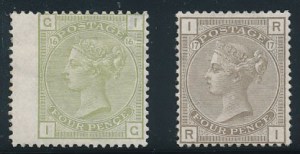 There were several concerns that were raised against issuing postage stamps when Rowland Hill advanced the idea in the late 1830's. Most of the objections were of the "not invented here" variety which is part of a normal human resistance to change. But three major objections -counterfeiting, reuse of postage stamps and accountancy issues- were solved or ameliorated with one simple innovation-check letters.
There were several concerns that were raised against issuing postage stamps when Rowland Hill advanced the idea in the late 1830's. Most of the objections were of the "not invented here" variety which is part of a normal human resistance to change. But three major objections -counterfeiting, reuse of postage stamps and accountancy issues- were solved or ameliorated with one simple innovation-check letters.
Check letters are simple a way of indicating where in the sheet a stamp was printed. Beginning at the top of the sheet all of the first horizontal row of stamps was given an "A" as the left hand check letter and so across the sheet for the twelve stamps in the horizontal row. The vertical rows were lettered on the right hand side of the stamp for the twenty rows that made up the vertical rows so that the first stamp at the top left was lettered AA and the last stamp in the last row TL making 240 stamps - Posted February 04, 2019in NewsRead more »
 The problem of what quantities exist of different classic stamps has been one of the great difficulties of philatelic research. Before the days of the Internet nearly all classic stamps that were sold were not illustrated so it was impossible for any census taker to know if he had counted a given specimen before. Counts of stamps such as United States 5c and 10c 1847 tend to be little more than guesses. We know that approximately 3.8 million 5c and 900,000 10c stamps were sold over the postal counters (that is delivered to post offices and not returned as unsold). But how many have survived the ensuing 160 years and still exist in collectors hands? Such numbers are important for anyone pondering stamp prices-whether such prices are higher or lower relative to popularity than they should be. Are there large quantities of US #1s in dealer hands that would preclude prices rising very much were demand to increase? What would happen if these quantities were dumped? Such questions are important
The problem of what quantities exist of different classic stamps has been one of the great difficulties of philatelic research. Before the days of the Internet nearly all classic stamps that were sold were not illustrated so it was impossible for any census taker to know if he had counted a given specimen before. Counts of stamps such as United States 5c and 10c 1847 tend to be little more than guesses. We know that approximately 3.8 million 5c and 900,000 10c stamps were sold over the postal counters (that is delivered to post offices and not returned as unsold). But how many have survived the ensuing 160 years and still exist in collectors hands? Such numbers are important for anyone pondering stamp prices-whether such prices are higher or lower relative to popularity than they should be. Are there large quantities of US #1s in dealer hands that would preclude prices rising very much were demand to increase? What would happen if these quantities were dumped? Such questions are important - Posted January 31, 2019in NewsRead more »
 Most collectors collect what they like for a variety of reasons that have nothing to do with the popularity of the area or the potential for financial growth in what they collect. Others collect whatever is the "hot" area hoping to ride the train of popularity to make their collecting not only fun but profitable. Both are fine ways to go about your hobby. But many want to collect an area that is fun, challenging and currently inexpensive and that has the potential for price growth greater than the hobby as a whole.
Most collectors collect what they like for a variety of reasons that have nothing to do with the popularity of the area or the potential for financial growth in what they collect. Others collect whatever is the "hot" area hoping to ride the train of popularity to make their collecting not only fun but profitable. Both are fine ways to go about your hobby. But many want to collect an area that is fun, challenging and currently inexpensive and that has the potential for price growth greater than the hobby as a whole.
When people ask me to recommend an area like this the country of Pakistan usually comes to mind. First the demographics. Pakistan is sixth most populous country in the world with over 160 million people. It has a developing economy and and an increasingly educated population. And most importantly for the growth of its philately, the Pakistani diaspora contains a highly educated and successful group

